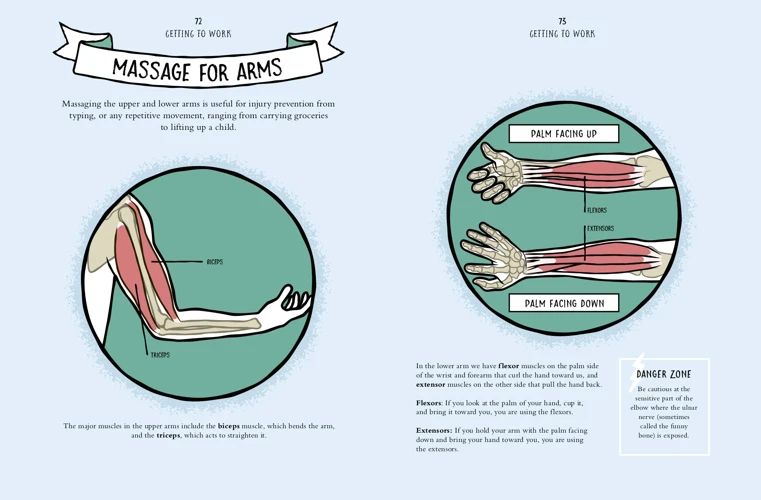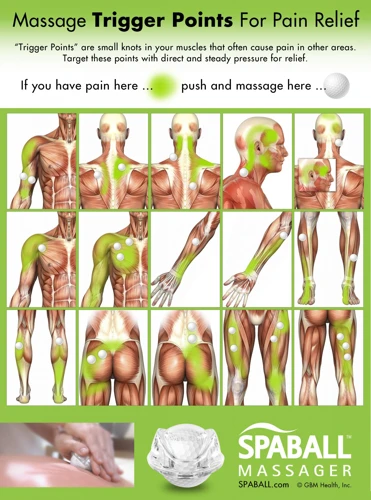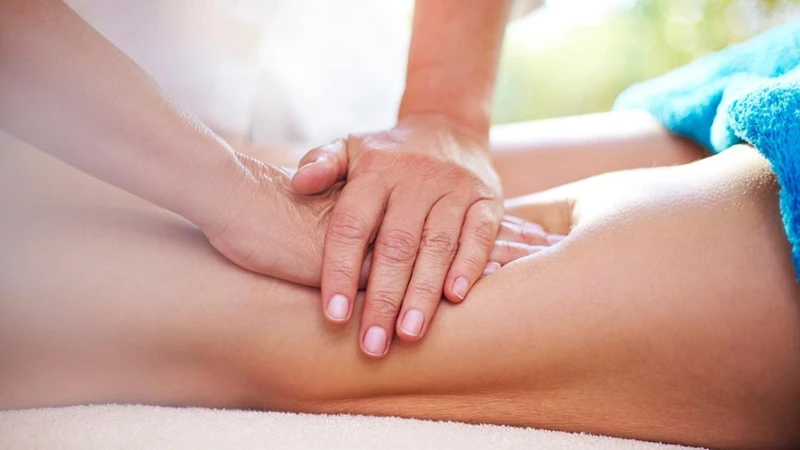If you’re looking for a natural way to manage chronic pain or just want to relax and restore your well-being, massage therapy may be the answer. Massage therapy is known to be an effective way to reduce pain and discomfort, as well as improve overall well-being. This article will explore how massage can help relieve pain, improve mobility, and restore your well-being. We will discuss how massage works, the different types of massage, and the potential benefits of massage therapy. Finally, we will look at how massage can be used to help those with chronic pain. By the end of this article, you will have a better understanding of how massage can help relieve pain and restore your well-being.
Contents
What Is Massage and How Does It Work?

Massage is a holistic practice used to manipulate the body’s soft tissues. Through the application of pressure and movement, massage helps to reduce muscle tension, improve circulation and range of motion, and enhance relaxation. Massage therapy encourages the body’s natural healing process while providing relief from physical and emotional stress.
Types of Massage
There are many different types of massage, including Swedish massage, deep tissue massage, sports massage, and hot stone massage. Each type of massage is designed to target specific areas of the body and provide relief from different types of pain.
Benefits of Massage
Massage can provide a range of benefits, including improved circulation, enhanced relaxation, increased flexibility, and relief from pain. Massage can help to reduce stress, improve sleep, and reduce inflammation. Massage can also help to improve posture, increase energy levels, and improve overall well-being. Massage can be particularly beneficial for those suffering from chronic pain, as it can help to reduce pain and stiffness and improve mobility. How does massage reduce pain? Massage techniques such as kneading, rolling, and pressing help to release tension in the muscles and promote circulation, which in turn helps to reduce pain and discomfort.
How Can Massage Help Relieve Pain?

How Massage Reduces Pain
Massage reduces pain by releasing endorphins, which are the body’s natural painkillers. Massage also helps to reduce inflammation and improves circulation, both of which can help reduce pain. Additionally, massage helps to relax the muscles and reduce tension, which can help reduce chronic pain.
Benefits of Massage for Pain Relief
Massage can be used for treating a variety of different types of pain, including headaches, neck pain, and back pain. It can also help with chronic pain, such as fibromyalgia, arthritis, and muscle tension. Massage can also help with the pain associated with injuries and post-operative pain. Additionally, massage can improve range of motion and flexibility, which can help reduce pain. Massage can also help to reduce stress and improve relaxation, which can help to reduce pain.
Massage Techniques for Pain Relief

Massage therapy is one of the oldest healing techniques and has been used for centuries to reduce pain and improve overall well-being. Massage therapy can be divided into various techniques, such as:
- Swedish Massage: This is the most common type of massage and involves long, gentle strokes. It is ideal for relaxation and can help to reduce muscle tension and stress.
- Deep Tissue Massage: This type of massage involves applying pressure to the deeper layers of tissue, which can help to reduce chronic pain and restore mobility.
- Trigger Point Massage: This technique focuses on specific areas of the body that have been identified as ‘trigger points’, which can be the source of pain. Pressure is applied to these areas to reduce pain and restore mobility.
- Sports Massage: This type of massage is designed to reduce muscle tension and improve performance. It can help to reduce pain and improve flexibility.
- Reflexology: This is a type of massage that focuses on the feet and hands. Pressure is applied to certain areas, which can help to reduce pain and improve overall well-being.
Massage therapy can be used to reduce pain and improve overall well-being. It is important to discuss your specific needs with a qualified massage therapist in order to determine the best type of massage for your individual needs.
Who Can Benefit From Massage?

Everyone can benefit from massage therapy, no matter what their age, gender or physical condition. However, certain groups of people may find massage particularly beneficial:
- People with chronic pain, such as lower back pain, neck pain, or fibromyalgia.
- People who are recovering from an injury, surgery or illness.
- People with conditions such as stress, anxiety, depression or insomnia.
- People with high blood pressure or other cardiovascular issues.
- Pregnant women.
- People with muscle tightness or soreness.
- Athletes.
Massage can also be beneficial for people simply looking to relax and de-stress.
Tips for Choosing a Massage Therapist

| Tip | Description |
|---|---|
| Check qualifications and licenses | Make sure your massage therapist is properly licensed and certified before you begin any treatments. |
| Check reviews | Research reviews online, or ask friends and family who have had massages before. Speak to the therapist or massage therapist, or the spa, to get a sense of the atmosphere and the quality of service they provide. |
| Consider your needs | Choose a massage therapist who specializes in the type of massage you need. Consider the type of massage, the pressure level and the duration of the massage you want. |
| Discuss options | Discuss what you are looking for in a massage with the therapist and ask questions about their experience, techniques, and methods. |
| Set expectations | Be clear about your expectations and communicate them to your massage therapist. Let them know what you are looking for, and any concerns you have. |
How Often Should You Get a Massage?

The frequency of massage treatments depends on the individual. Generally, if you are looking to relieve pain, reduce stress, and improve your overall wellness, it is recommended to receive a massage once a week. This allows the body to continually benefit from the relaxation, improved circulation, and loosening of tight muscles that massage therapy provides. In addition, regular massage sessions can help to identify and address any areas of tension or pain before they become problematic.
For those with chronic conditions such as fibromyalgia, arthritis, and chronic pain, massage therapy can be beneficial in managing symptoms. Depending on the severity of the condition, more frequent massage treatments may be recommended. However, it’s important to discuss the frequency of your massage sessions with your doctor or massage therapist before beginning treatment.
For athletes who are in training for an event or competition, weekly massage sessions may be beneficial in helping to reduce muscle tension and improve performance. Massage can also help to speed up the recovery process after an intense workout.
Ultimately, the frequency of massage treatments should be determined based on your individual needs and lifestyle. If you have any questions or concerns about your massage schedule, it’s important to speak with your massage therapist to ensure you are receiving the most beneficial treatments for your health and wellness.
What to Expect During a Massage Session
| Step | Description |
|---|---|
| 1 | Your therapist will ask you to fill out a questionnaire that covers your health history and any special needs you may have. |
| 2 | The massage therapist will then explain the massage technique they will be using and ask you to lie on the massage table. |
| 3 | The massage therapist will use lotion or oil to reduce friction on your skin. |
| 4 | The massage therapist will use a combination of kneading, tapping, rubbing, and stretching to work the muscles and soft tissues. |
| 5 | The massage therapist may use hot stones or warm towels to relax your muscles. |
| 6 | The massage therapist will check in with you to make sure you’re comfortable throughout the massage. |
| 7 | At the end of the massage, the massage therapist will leave the room while you get dressed. |
| 8 | Your massage therapist will then come back and discuss any areas that may need further work and provide tips for taking care of yourself at home. |
Massage sessions typically last for 30-90 minutes, depending on the type of massage being performed. During the massage, your body will be covered with a sheet or towel. Your massage therapist will uncover only the parts of your body that they are working on. It is important to let your massage therapist know if you are uncomfortable in any way during the massage session.
Frequently Asked Questions
What Types of Pain Can Massage Help to Relieve?
Massage therapy can provide pain relief for a variety of conditions, including: muscle spasms, headaches, neck and shoulder strains, nerve pain, low back pain, joint pain, fibromyalgia, sciatica, and post-operative pain. Massage therapy can also improve circulation and reduce stress, which can help the body heal itself.
What are the Benefits of Massage Therapy?
Massage therapy can provide numerous physical, psychological and emotional benefits. Physically, it helps relieve pain, reduce stress and tension, improve circulation and posture, and increase flexibility and joint mobility. Psychologically, it helps promote relaxation, reduce anxiety and depression, and enhance feelings of well-being. Massage also helps improve sleep quality, reduce fatigue, and promote a sense of renewal and rejuvenation. Emotionally, it can help reduce fear, increase self-esteem, and build a stronger connection between the mind and body.
How often should I get a massage to experience the most benefit?
- Frequency: It is recommended to get a massage once or twice a month to maintain the benefits.
- Chronic Pain: If you suffer from chronic pain, it is recommended to get a massage two to three times per week.
- Stress Relief: If you are looking for stress relief, then a massage once a week or every two weeks can be beneficial.
- Health Goals: If you have specific health goals, then the frequency of massage will depend on your individual needs. Your massage therapist can help you determine a schedule that works for you.
Massage therapy can be an effective way to reduce stress, relieve pain, and restore your sense of wellbeing. Finding the right massage therapist and establishing an effective treatment plan is essential to getting the most out of your massage sessions. With regular sessions, you can experience the greatest benefits.
What Should I Expect When I Get a Massage?
During a massage, you will be asked to lie down on a massage table, usually covered with clean sheets or towels. A massage therapist will start with light strokes and gradually use deeper pressure. The therapist will focus on areas of tension or pain, working the muscles and soft tissue until the tension is released. You may be asked to move your body into different positions, as this helps the massage therapist reach the deeper tissues. As the massage progresses, you may feel more relaxed and your pain may decrease. After the massage, you may feel some soreness, but this should pass within a few hours.
Is Massage Therapy Safe for Everyone?
When used correctly, massage therapy is generally safe and beneficial for people of all ages and backgrounds. It is important to find a qualified and experienced massage therapist who understands the specific needs and health of the individual. To ensure safety, your massage therapist should have knowledge of anatomy and physiology, and be able to adjust the treatment as needed. Additionally, your therapist should ask about any medical conditions or medications you may be taking, as certain conditions or medications may require special attention or techniques.
Conclusion
Massage therapy is an effective way to relieve pain, reduce stress, and restore well-being. It is a natural, non-invasive way to promote healing and restore balance in the body. Massage has been proven to be beneficial for a variety of physical and mental ailments, and can be tailored to individual needs and preferences. With increasing research into the effectiveness of massage therapy, the benefits are becoming more widely recognized. For those looking for an alternative or complementary therapy to help manage pain and improve their overall health and well-being, massage therapy is a powerful tool.

